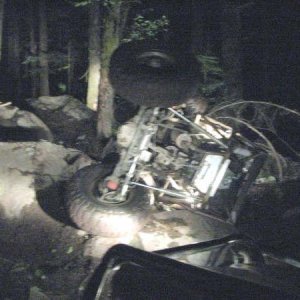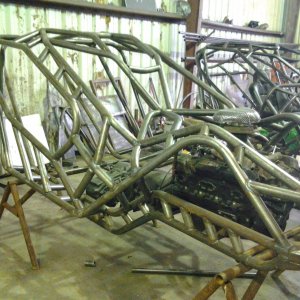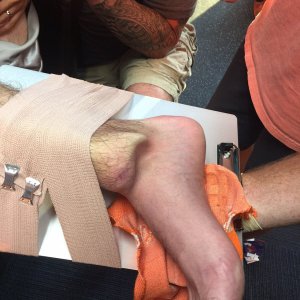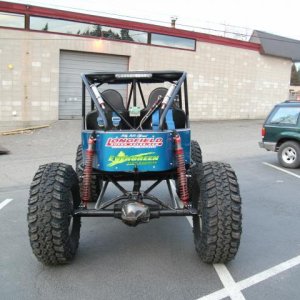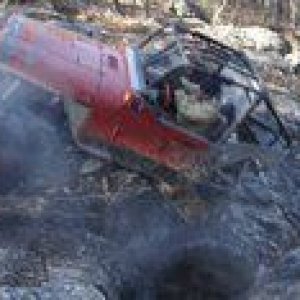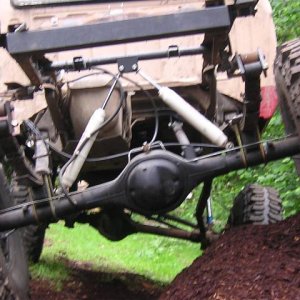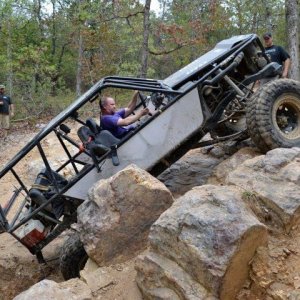UPDATED (pg 2 pics): In tank fuel pick-up's for FI SBC
Vehicle: 1980 CJ5
Engine: '96 LT1 (mildly tweaked per PO)
I've recently scrapped the OEM fuel tank and placed an RCI fuel cell in the back of the Jeep's bed above-board. I was hoping to use the Walbro multi-point fuel pick-up's as they seem like a great solution to low fuel/steep climb or descent scenarios that might cause fuel starvation. However, I've developed a concern about the set-up.
The RCI cell's fuel pick-up tube coming from the -8AN port up top is 1/2" (logical since -8AN is 1/2" OD for hard line). Unfortunately, the multi-point pick-ups are designed to work with 5/16" submersible fuel hose. I've ordered the necessary parts to add a -6AN bulkhead fitting to the cell and run the 5/16" hose off that to the in-tank pick-up's. My concern lies in the fact that the PO used 3/8" line from the OEM fuel tank to the motor and this causes me to wonder if 5/16" hose and hard lines in the tank are going to be too restrictive. When I visually compare the 3/8" hardline I have to the 5/16" hard line I was planning to use in the tank, the ID is considerably different. Since I'm not a fuel system expert, do ya think this difference will cause me any problems (i.e. insufficient fuel flow/volume)?
Note: the fuel line from the top of the bulkhead fitting would be 3/8" going to an OEM LT1 fuel filter and then to a Bosch (#0 580 254 984) in-line fuel pump to the motor.
Any input would be greatly appreciated.
Vehicle: 1980 CJ5
Engine: '96 LT1 (mildly tweaked per PO)
I've recently scrapped the OEM fuel tank and placed an RCI fuel cell in the back of the Jeep's bed above-board. I was hoping to use the Walbro multi-point fuel pick-up's as they seem like a great solution to low fuel/steep climb or descent scenarios that might cause fuel starvation. However, I've developed a concern about the set-up.
The RCI cell's fuel pick-up tube coming from the -8AN port up top is 1/2" (logical since -8AN is 1/2" OD for hard line). Unfortunately, the multi-point pick-ups are designed to work with 5/16" submersible fuel hose. I've ordered the necessary parts to add a -6AN bulkhead fitting to the cell and run the 5/16" hose off that to the in-tank pick-up's. My concern lies in the fact that the PO used 3/8" line from the OEM fuel tank to the motor and this causes me to wonder if 5/16" hose and hard lines in the tank are going to be too restrictive. When I visually compare the 3/8" hardline I have to the 5/16" hard line I was planning to use in the tank, the ID is considerably different. Since I'm not a fuel system expert, do ya think this difference will cause me any problems (i.e. insufficient fuel flow/volume)?
Note: the fuel line from the top of the bulkhead fitting would be 3/8" going to an OEM LT1 fuel filter and then to a Bosch (#0 580 254 984) in-line fuel pump to the motor.
Any input would be greatly appreciated.
Last edited:





